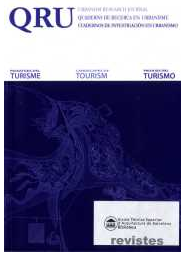Costa Brava, los retos urbanísticos del turismo de masas: la huella de la ciudad jardín y algunos principios racionalistas en el tejido turístico de masas
DOI:
https://doi.org/10.5821/qru.9585Abstract
El turismo de masas se plantea como un reto nuevo para el urbanismo a mitad de siglo XX. La Costa Brava se acoge al modelo de ciudad jardín utilizado por el turismo de élite y se introducen aportaciones racionalistas. La costa sirve como territorio de experimentación donde confluyen dos modelos de ciudad opuestos, la ciudad jardín y la edificación abierta. Pese al desorden de los primeros ensayos, se adoptan parámetros específicos en los nuevos tejidos, y la relación de los edificios con el entorno marca una clara diferencia con la ciudad anterior. En los años 80 se replantea la costa solventando las deficiencias que se habían generado, pero sin tener en cuenta las especificidades de la ciudad turística. En la actualidad se mantiene este mismo planteamiento sin ninguna evolución, y sin poner aún de relieve la identidad de los tejidos y arquitecturas turísticas desarrolladas durante la etapa pionera.Downloads
Issue
Section
License
Those authors who have publications with this journal, accept the following terms:
a. Authors will retain their copyright and guarantee the journal the right of first publication of their work, which will be simultaneously subject to the Creative Commons CC BY-NC-ND-4.0 recognition license that allows third parties to share the work provided that its author and its first publication are indicated in this journal, but they cannot be changed or used commercially.
b. Authors may adopt other non-exclusive license agreements for the distribution of the version of the published work (eg: deposit it in an institutional telematic archive or publish it in a monographic volume) provided that the initial publication in this journal is indicated.
c. Authors are allowed and recommended to disseminate their work through the Internet (e.g. in institutional telematic files or on their website) before and during the submission process, which can lead to interesting exchanges and increase citations. of the published work. (See The effect of open access).













